Bidets might be a new revelation for Americans and Australians, but they have existed for hundreds of years in Asia, South America, and some parts of Europe. The first one is said to be invented around the 17th century in France. With no exact date of invention and the inventor unknown, history remains a mystery.
The first written record of the bidet is from 1726 to Italy. Still, there are also records of royals such as Maria Carolina of Austria asking for a personal bathroom in the Royal Palace of Caserta in the 18th century.
Interestingly, they were also used as a device for contraception according to historical antecedents. By today’s standard, it was quite ineffective but used nonetheless.
They were first introduced in the United States in 1928 by John Harvey Kellog when he applied for a patent on a device he named ‘anal douce’, a system that can be compared to a nozzle. American Bidet Company introduced the first adjustable nozzle with a warm water option in 1965. The plan was to make bidet a common household name.
So, what is a bidet exactly? How and when should we use it? And what else is there to know about it? Read on to find out the answer to all these questions and more.
Contents
What Is A Bidet?
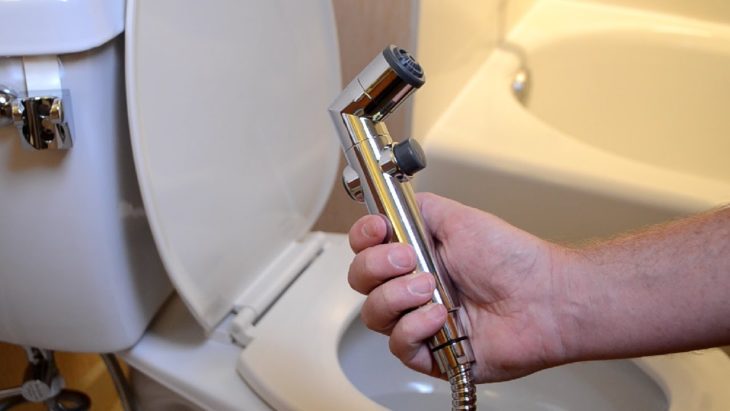
Source: ezvid
If you’re wondering about what is a bidet, you can click here to learn about it.
A bidet, pronounced buh-duh, is a hybrid of toilet-sink or a basin used to wash with water after you use the bathroom. Usually, it’s placed near the toilet inside the bathroom.
It can also be a plumbing fixture, like a small handheld shower. But, the modern version of it combines the toilet seat with an electronic bidet. There are many types of this high-tech toilet sink, so let’s take a look at what options are available in the market nowadays.
Handheld
Also called the bidet shower or sprayer, it is a nozzle that is attached to the toilet. As the name suggests, it is handheld. Therefore, you have to manually or physically place it near your genitals, perineum, inner buttocks, and anus. You can control and position the stream of water with this nozzle.
Freestanding
This is the oldest and the most traditional kind of bidet, probably the most familiar and well-known one as well. Originated in Europe, they are usually placed beside the toilet and can look like the sink, only at a lower level from the floor. You can fill them with water, and most of the time, they can be geared up with jets. They can be expensive to install.
Built-in
As the name suggests, this bidet is built-in in your toilet with special features. This is the most modern version that can automatically shoot out a vertical stream of water after you flush the toilet.
You can also hook it to the hot water pipe system or a built-in water heater/warmer to spray warm water when you use it. This can be done to all the types of bidets available. This feature is especially useful during the winter, but whether it’s summer or winter, your bottom will always thank you for a warm stream of water.
Other Options
There are also cheaper options available that are targeted more towards the younger generation. These are non-electrical, attachment-style bidets. They are a good option for anyone starting to explore the world of this hybrid toilet sink and aren’t yet fully committed to a long-term relationship with it.
Another reason to go for the cheaper one is if you are renting, and you can’t make any definitive changes in the bathroom without the landlord’s permission, which, let’s face it, can take a feat of struggle to achieve. And to be fair, your landlord might also not want any permanent change in the bathroom for just one tenant.
How Do You Use A Bidet?
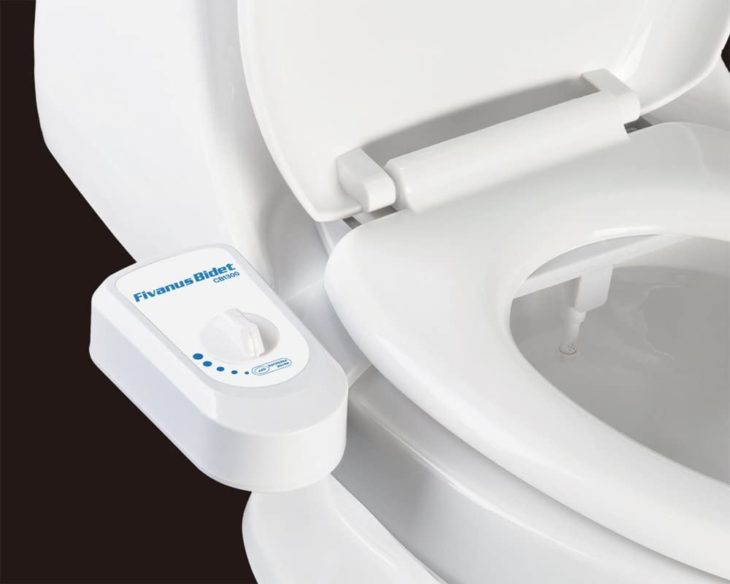
Source: amazon
The coveted answer to how to use a bidet can either be tricky or simple, depending on how open you are to the idea of using one. It can seem foreign and uncomfortable if you are not familiar with it, and the application can seem like an ‘adventure out in the wild’.
The first thing you need to do is familiarize yourself with it and make a plan on how you want to use it before you attempt your first try. If you are using a handheld spray, turn it on and take note of the water pressure. If it’s the built-in one, you can flush it to see from where exactly the stream of water will come out and how strong the water pressure will be. This will prepare you for any surprises when you make your first attempt to use it.
There are also some points you need to keep in mind when using it. The rule is before you use it, clean off with toilet paper first. There’s no need to use soap afterward.
Make sure your clothes are not in the way of the water, nobody wants an uncomfortable wet situation. Speaking of clothing items, if you notice a towel hanging beside the bidet, under any circumstances, do not use it to dry your rear end; the towel is to dry your hands.
There’s a chance of a leaky situation if you forget to turn off the T-valve after use if you are using the attachment. This is a no-compromise rule, so be careful that you don’t forget.
Why Use It?
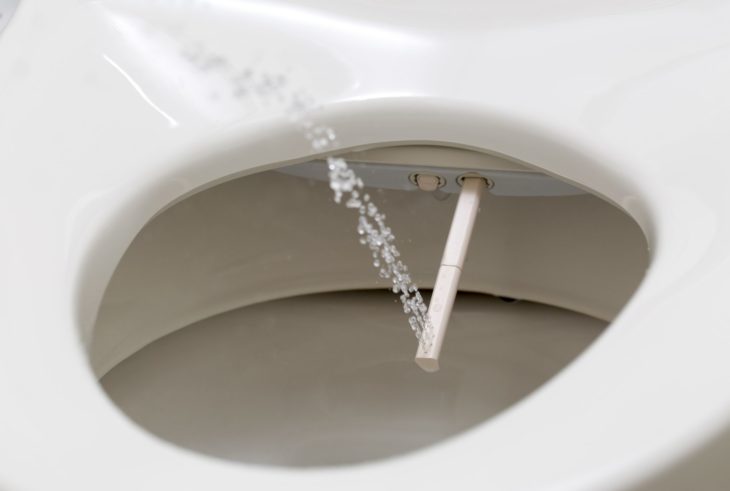
Source: mentalfloss
Think about it this way. We use water to clean our whole body while we take a shower, but why not our bottom and our genitals after we go on and finish our business in that bathroom? To put it more bluntly, would you not wash your hands if you had feces in them? Would you just wipe them and be done? Of course not, you will make sure your hands are properly clean with water and antibacterial soap.
Just like that, our bottom also deserves a more than average level of cleanliness. It’s healthier for your butt! Using it is a matter of personal hygiene rather than a matter of preference, and once you are down that path, trust me, there’s no going back.
What Are The Benefits Of Using A Bidet?
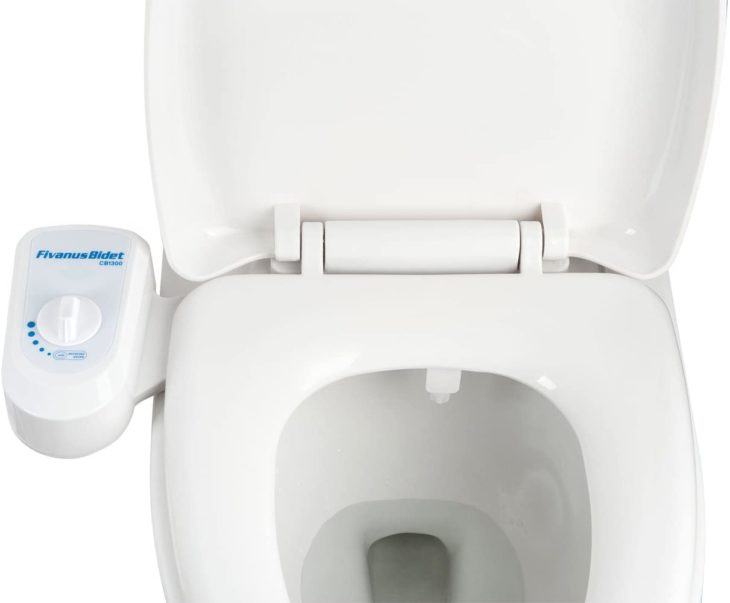
Source: amazon
Apart from having a healthier, cleaner, and fresher butt, a bidet has a lot of other benefits. Some long-term users claim it to be more comfortable than using toilet paper, especially for people who have had surgery, experience irritable bowel syndrome, or just given birth. This is because washing with water is much gentler than using even the softest toilet paper. Your anus has nerve endings around it and is actually quite tender, and tissue paper can irritate and damage it. Some of the benefits of this toilet basin are:
They are environment-friendly
According to a study, to make one roll of toilet paper, it takes 37 gallons of water and about 1.5 pounds of wood. You can save a lot of water when you use it, about just 1 pint of water compared to one roll of toilet paper. To give an example, Americans use a staggering 36.5 billion rolls of toilet paper every year, and that’s a lot of trees and a lot of water resources. Use environmentally-efficient bidets, and you can do your part for the earth.
They Can Prevent Hemorrhoids
Millions of people are suffering from hemorrhoids, and the chances of developing it increase as we age. Even though the correlation of hemorrhoids prevention and bidet use is yet to be studied in a larger group, one small study showed that low to medium water pressure could alleviate pressure on the anus. It also boosts the blood circulation around it.
Cheaper Options Are Available
We have already discussed the cheaper and simple non-electric bidets available, and some of them take only 10 to 15 minutes to install.
You also don’t need to wipe after the spray; you can sit in your toilet a minute to air-dry. Or just pat yourself dry with some toilet paper or a washcloth.
You can also snag a fancier model that has an air-drying function (like a warm hairdryer for your butt!). But this model will obviously be a bit pricier.
No More Mess During Menstruation
Anyone who deals with heavy bleeding and clots during their periods knows how hard it is to clean themselves. Some women even take a few showers during the day to feel cleaner, and this can be such a hassle.
A bidet can be your savior in those days. When you feel irritated down there during heavy bleeding days, you can use it to clean yourself off using the strength of the water pressure to your liking.
Are There Any Risks Associated With The Bidet?
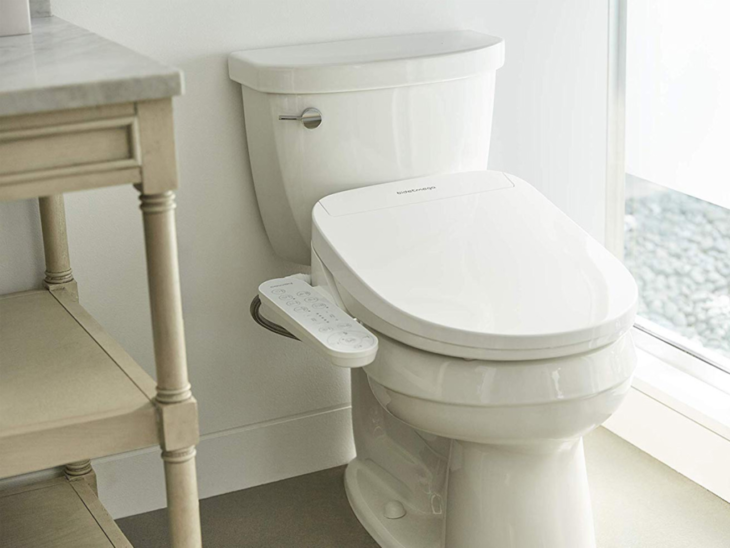
Source: globalnewshut
The bidet has a great many benefits, but let’s also talk about the risks. Be careful of your body parts and where you are spraying the water, especially for those who have a vulva. To avoid getting bacteria in your vulva, direct the water back and forth.
For anyone with male genitalia, you might experience some prickling or itchy sensation in your anus after defecation when using this toilet seat. This was discovered in a 2016 study in Japan.
For anyone with female genitalia, there’s a risk of developing bacterial vaginitis, according to a study. The study shows that using warm water can disrupt the natural flora in the vagina. It’s not just in case of this particular toilet sink; electric warm water carries a general risk of bacterial contamination.
Bottom Line
Bidets are becoming more and more popular among the aging community and not just in Europe. Countries like Italy and Japan are setting an example for the case for using it. 97% of households in Italy have a bidet installed in their bathroom, and its installation is actually mandatory in the country since 1975.
Japan is a pioneer in this technology, and 76% of the country has one installed in their homes. The country introduced its first paperless toilet in 1980 by a manufacturer called Toto. Toto was a combination of toilet and bidet, and it would dry the user as well afterward. Nowadays, these high tech basins in Japan and South Korea boast even seat warmers.
You can say the lack of acceptance of bidet comes from a lack of knowledge about it, and it can also be explained by the over-the-top marketing of toilet papers by their producers. Even though it had a slow start in the United States and Australian, it is becoming increasingly popular, and it doesn’t seem to be slowing down soon. And, there you have it – everything you need to know about it to make a conscious and informative decision on whether you need it in your life!
